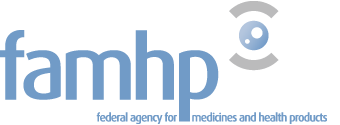The European Medicines Agency (EMA) published the eighth ESVAC (European Surveillance of Veterinary Antimicrobial Consumption) report on the sale of antibacterials for veterinary use in 2016.
On 15th October 2018 the eighth ESVAC report was published, which is a summary of the sales figures for antibacterial agents for veterinary use in 2016. The results of thirty EU/EEA member states were identified.
Falling European trend
Sales of antibiotics are expressed in mg/PCU or mg/kg and take into account the biomass in livestock farming.
On average, sales in the European Union of antibacterial agents for veterinary use decreased by 20.1 % between 2011 and 2016. Sixteen countries experienced a reduction of 8.7 % to 57.8 %. Not all countries, however, experienced such a reduction, six countries experienced an increase of 7.9 % to 67.7 %.
The sale of critical subsItances, which are antibacterial substances that are important for public health, amounted to 0.21 mg/PCU, 2.70 mg/PCU and 6.62 mg/PCU, respectively, for third and fourth generation cephalosporins, fluoroquinolones and polymyxins.
On the EMA website an interactive database is available where specific trends can be checked to see whether figures from selected Member States can be compared.
Belgium
In Belgium, a reduction of 22 % compared to 2010 was achieved with 140 mg/PCU for 2016. This means that antibiotic consumption in animals remains relatively high, also compared with neighbouring countries with a similar animal husbandry structure such as France (72 mg/PCU), the Netherlands (53 mg/PCU) or Germany (89 mg/PCU). Belgium will therefore have to make sustained efforts to reduce the use further.

In Belgium, sales of third and fourth generation cephalosporins fell sharply in 2016 to 0.30 mg/PCU. This is also the case for fluoroquinolones, where the decrease was 0.59 mg/PCU. This has everything to do with the new measures concerning the use of critical means (mandatory sampling and sensitivity determination) and the publication of the Royal Decree of 21 July 2016 concerning the conditions for the use of medicines by veterinary surgeons and by those responsible for animals.
The use of polymixins (mainly colistin) decreases significantly (2.44 mg/PCU in 2016) and remains linked to the use of Zinc oxide (ZnO) that became available in 2013 as an alternative for the treatment of diarrhoea in weaned piglets. Compared with 2012, the year before ZnO became available, the use of colistin decreased by 60 %. For the macrolide group, in 2016 (8.7 mg/PCU) the status quo up to a slight increase can be noted compared to 2010 (8.3 mg/PCU).

Further information
8th ESVAC report on EMA website
EMA news

